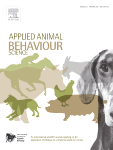Document type: report by CIWF and Eurogroup for animals
Authors: Peter Stevenson, Susanna Blattner, Marioa Boada-Sana, Iris Baumgärtner, Julia Havenstein, Te aDronjic, Lesley Moffat, Caroline Rowley, Constança Carvalho,
Preview: A cache of unpublished records obtained in summer 2023 reveals disturbing new evidence of the extent and nature of the EU's trade in farm animals. The data comprises official planning records - known as animal journey logs - relating to more than 180,000 consignments of animals moving between EU countries and to non-EU countries in a 19-month period from October 2021 - April 2023. These records come from TRACES which is the European Commission's online management tool which notifies, certifies and monitors trade in live animals and animal products
These records, together with publicly available Eurostat data reveal that over forty million pigs, cattle and sheep are transported annually on journeys between EU member states. In addition, around four million cattle, sheep and pigs are exported to non-EU countries including Türkiye, Serbia, destinations in the Middle East and North Africa, and even as far afield as Kazakhstan and Uzbekistan as well as Brazil and Colombia. [...]This has allowed us to include detailed information in this report on the main strands of the EU's live animal trade, including the number of animals trucked and shipped on the main routes together with journey times and distances.
Several disturbing factors came to light as we examined the new records, including:
Incomplete and deficient records [...]Many journeys are much longer than would appear to be the case from official records
[...] This is due to the use of assembly centers as places of departure, distribution centers as places of destination, long delays at the exit point.
Use of assembly centers
The use of assembly centers is widespread. The new data reveals that over 60% of journeys start from assembly centers. However, an assembly center is not the real start of a journey. [...]
Assembly center hopping
Some transporters circumvent the requirement for 24 hours rest by presenting an assembly center as the journey's destination. [...] This practice is hard to spot as it will not show up on official data. [...]Destinations which are not the real final destination [...]Lengthy delays at border with Türkiye [...]Lengthy delays at ports
Most animals exported to non-EU countries face both a road and a sea journey. They are taken by road to a port. On arrival they may be kept for lengthy periods on stationary vehicles [...]Onward journey after unloading in the port of arrival in the destination country
Animals may face lengthy onward journeys to a farm or a slaughterhouse after arrival in non-EU countries. [...]Transport of unweaned calves [...] Most of these calves are the unwanted male calves from the dairy sector. These tiny animals, often just two to three weeks of age, are frail and quite unsuited for transport. [...]
Far-reaching strengthening of EU law on animal transport is needed
We urge the Commission to propose, and the Member States and the Parliament to adopt the following reforms to Council Regulation 1/2005 on the protection of animals during transport: - A ban on the export of live farm animals to non-EU countries except to countries that are geographically close to the EU and that have legislation on the protection of animals during transport and slaughter that is at least as strong as that of the EU. - A prohibition on the transport of unweaned animals: Unweaned animals should not be transported. They suffer greatly during transport. - Maximum journey time of eight hours to slaughter or for fattening. - For poultry, rabbits and end of production animals, the maximum journey time should be four hours. - Pregnant animals: animals for whom 40% or more of the expected gestation period has already passed must not be transported. - Temperature limits: animal transports should not be approved when external temperatures are forecast to be below 5 ºC or above 25 ºC on any section of the route. - Standards for live fish transport: licensing of vehicles, training, planning and monitoring of journeys to ensure water quality, and a clean, safe and calm environment to avoid injury and distress; ensure fitness for transport and health and welfare monitoring pre, during and post-transport; setting maximum and species-specific starvation periods.






